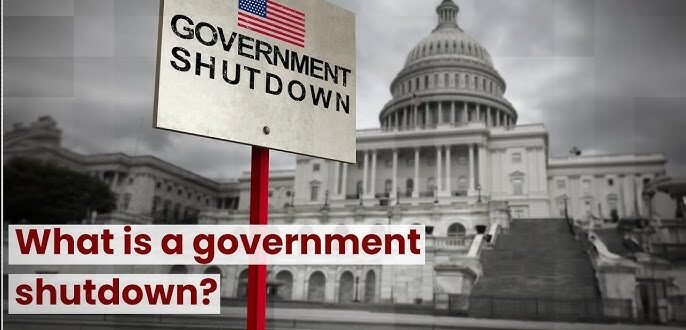Introduction
A government shutdown in the U.S. occurs when Congress fails to approve funding for federal operations, causing many agencies to halt or scale back services.
Shutdowns directly impact millions of federal workers, delay government services, and often make global headlines because of their economic and political consequences.
In this article, you’ll learn what a U.S. government shutdown is, why it happens, how it affects people, and what history teaches us about its impact.
What Is a Government Shutdown?
A government shutdown happens when the U.S. Congress and the President cannot agree on a federal budget or temporary funding bill, leaving government agencies without legal authority to spend money.
During a shutdown, “non-essential” federal services pause, while critical ones like military operations, law enforcement, and emergency healthcare continue. Hundreds of thousands of government employees may be furloughed (sent home without pay) or required to work without immediate pay.
Why Do Government Shutdowns Happen?
Shutdowns are tied to the U.S. budgeting process. Here’s how:
- Congress must pass funding bills to allocate money to federal agencies each fiscal year (Oct 1 – Sep 30).
- If Congress cannot agree on these bills—or pass a short-term measure called a continuing resolution—funding lapses.
- Without funding, agencies legally cannot operate fully, triggering a shutdown.
Most shutdowns occur because of political disagreements. Common causes include:
- Disputes over federal spending priorities.
- Battles over controversial policies (e.g., healthcare, border security).
- Partisan gridlock between the House, Senate, and the President.
Common Questions About U.S. Government Shutdowns
What services stop during a shutdown?
Non-essential services pause, including many national park operations, passport processing, and routine federal agency work. Essential services like air traffic control, the military, and Social Security payments continue.
How long do shutdowns last?
It varies. Some last a day or two, while the longest (2018–2019) stretched 35 days.
Do federal employees get paid during a shutdown?
Most furloughed workers go unpaid until Congress approves back pay later. “Essential” workers must report to duty but may not receive pay until the shutdown ends.
Does a government shutdown affect the economy?
Yes. Shutdowns can delay contracts, reduce consumer spending by furloughed workers, and shake financial markets. The longer it lasts, the bigger the impact.
Can states or local governments help cover for shutdowns?
Sometimes. State governments may step in temporarily (for example, to keep national parks open), but most shutdown effects can’t be fully offset locally.
Historical Examples of U.S. Government Shutdowns
- 1995–1996: A 21-day shutdown under President Bill Clinton, largely over Medicare and budget disagreements.
- 2013: A 16-day shutdown due to disputes over the Affordable Care Act (“Obamacare”).
- 2018–2019: The longest in U.S. history (35 days), tied to debates over funding for a U.S.-Mexico border wall.
These examples highlight how shutdowns are often less about numbers and more about politics.
How a Shutdown Affects Everyday Americans
For ordinary people, a shutdown can feel distant—until it isn’t. Common impacts include:
- Travel delays: Passport and visa processing slows down.
- Public access limits: National parks, museums, and monuments often close.
- Financial stress: Federal workers and contractors may miss paychecks.
- Business uncertainty: Companies that depend on government contracts face delays.
Even those not directly connected to federal jobs may feel ripple effects in the economy.
Comparisons and Global Context
Shutdowns are rare outside the U.S. Most democracies have systems that prevent funding lapses. For example, in the U.K. or Canada, government functions continue even during political disputes.
The U.S. is unusual because federal law prohibits spending without Congressional approval, making shutdowns a uniquely American political drama.
Conclusion
A U.S. government shutdown occurs when Congress fails to pass funding, leaving many federal agencies unable to operate. These shutdowns are caused by political gridlock and often result in furloughed workers, delayed services, and economic costs.
While shutdowns are disruptive, they’ve become a recurring feature of American politics—sometimes lasting just a few days, sometimes more than a month. For citizens, the key takeaway is that government shutdowns are less about a broken system and more about political standoffs that ripple through everyday life.

